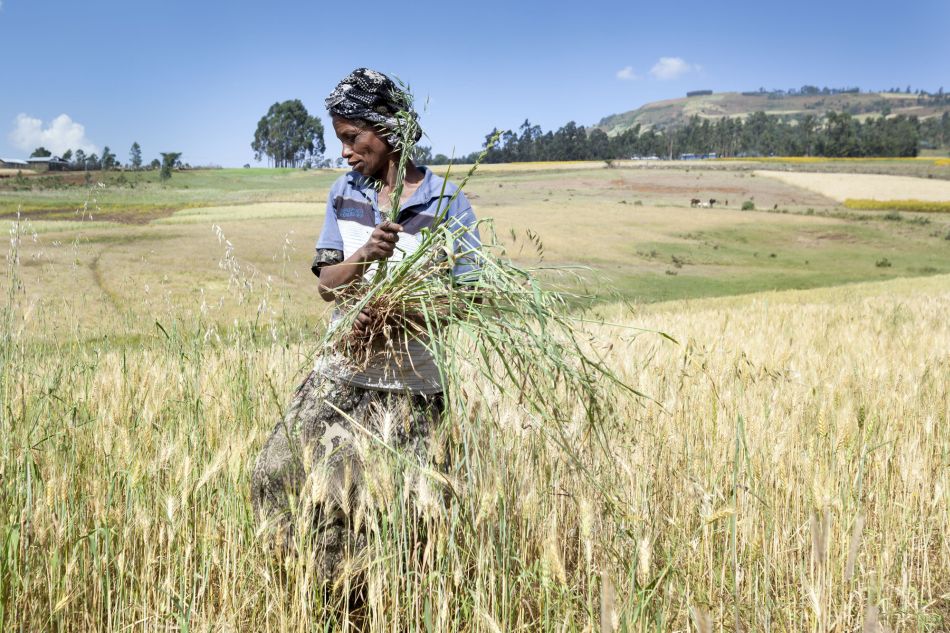From antimicrobial usage to kitchen gardening:
A roundup of IWMI contributions to research articles and journals in December 2021 and January 2022
By Clara Colton Symmes, Princeton in Asia Fellow, IWMI
In December 2021 and January 2022, experts from the International Water Management Institute (IWMI) contributed to a diverse array of articles in research journals, focusing on challenges to water security, agriculture, and sanitation. Continue reading below to learn about how their research seeks to mitigate these challenges through the deployment of creative, practical solutions.

Natural and anthropogenic sources of salinity in the Awash River and Lake Beseka (Ethiopia): Modelling impacts of climate change and lake-river interactions
Like many rivers around the world, the Awash River in Ethiopia feels the impact of human activity in its vicinity. Researchers including IWMI’s Meron Teferi Taye used an integrated catchment model to study salinity levels of the upstream Lake Beseka, where natural salinity is compounding due to human activities like irrigation. The work was detailed in an article published in Journal of Hydrology, and highlighted that natural and anthropogenic sources of salinity degrade water quality in the Awash River. Moreover, this research found that both climate change and discharge from Lake Beseka will continue to affect salinity levels in the river, and that modeling programs like the integrated catchment model used in this study will be essential for making sustainable water management decisions for the basin.
Read more here.
Increased antimicrobial use during COVID-19: The risk of advancing the threat of antimicrobial resistance
Over the course of the COVID-19 pandemic, antimicrobial drugs designed to slow the spread or kill microbes like viruses, bacteria, and fungi have been used to treat COVID-19, despite inconclusive evidence that they prevent or reduce illness. In a recent article published in Health Science Reports, IWMI’s Mahesh Jampani warns that increased intake of antimicrobials may lead to increased antimicrobial resistance, reducing the ability of these drugs to combat the microbes for which they are designed. The research found that certain amounts of antimicrobial loadings can also impact the environment by entering water systems through human waste, which can lead to increased resistance of environmental bacteria.
Read more here.
Taking inventory of natural resource indicators within the Sustainable Development Goals
Progress towards the U.N.’s 17 Sustainable Development Goals (SDGs) are measured by 231 indicators. However, IWMI’s Chris Dickens writes that “just 18 directly monitor the natural resources provided by land, water, air, and biodiversity.” In an article in Research Features, Dickens concludes that the current approach to the indicators is not holistic and lacks country-level data. He says that by linking SDG indicators to other biodiversity programs — or the U.N. Intergovernmental Panel on Climate Change (IPCC) — hard data at the country level would be easier to obtain and track.
Read more here.
Rainfall variability and trends over the African continent using TAMSAT data (1983–2020): Towards climate change resilience and adaptation
IWMI’s Niranga Alahacoon collaborated on a project focusing on rainfall variability across the African continent. The findings of the study, which were published in the journal Remote Sensing, were based on TAMSAT data from 1983 to 2020. The data revealed no significant change in rainfall in the southern and eastern regions of the continent, but did indicate significant increases in rainfall in northern and central Africa. The article concludes that because of Africa’s dependence on rain-fed agriculture, rainfall increases have the potential to positively impact on food security in those regions, so long as effective crop planning, drought and flood mitigation measures, and sustainable water resource management practices are implemented.
Read more here.
Optimising the water we eat: Rethinking policy to enhance productive and sustainable use of water in agri-food systems across scales
Water is both a finite resource and an irreplaceable component of agricultural production, making comprehensive water management essential in ensuring food security. Too often around the world, water is managed in silos, separating the needs of industries like agriculture from the needs of other sectors, such as sanitation or energy. But such a system lacks holistic perspectives, and can result in inequitable distribution of limited water resources. In an article published in The Lancet, IWMI’s Mark Smith, Petra Schmitter, and Stefan Uhlenbrook suggest a scale-specific approach to water management that would set the necessary caps on water usage. They argue that a cross-sectoral understanding of water system needs and limits would shift agricultural behavior and optimize the amount of food produced with finite water resources.
Read more here.
Okra (Abelmoschus esculentus) in a refugee context in East Africa: Kitchen gardening helps with mineral provision
Many refugee camps lack access to the nutritious foods essential for adult health and early childhood development. Cereal-based relief foods are common in the refugee camps of Ethiopia and Uganda, but they lack important mineral content. A recent study led by a team including IWMI’s Solomie Gebrezgabher examined how the gardening of okra, which is a commonly grown crop in much of East Africa, can both supplement this diet and help residents reconnect with agriculture. The study, published in SN Applied Sciences, emphasizes the significant contribution of okra to the levels of important minerals — including potassium and calcium — in the diets of young children and pregnant and lactating women.
Read more here.
Participation and politics in transboundary hydropower development: The case of the Pak Beng Dam in Laos
This journal article examines transboundary decision-making processes and repercussions in the context of the rapidly expanding hydropower development in Southeast Asia’s Mekong Basin. IWMI’s Diana Suhardiman uses the Pak Beng hydropower project as a case study to highlight some of the shortcomings of current approaches to transboundary environmental governance. In particular, this research also demonstrates how institutional disjuncture in hydropower decision-making can limit the participation of local communities affected by these projects.
Read more here.

